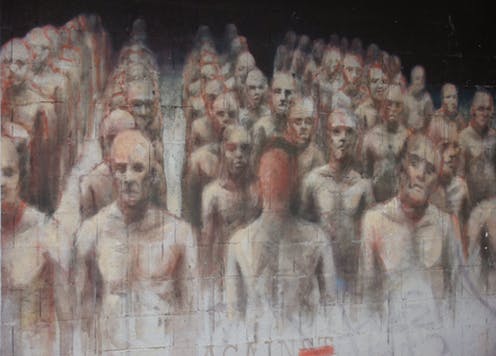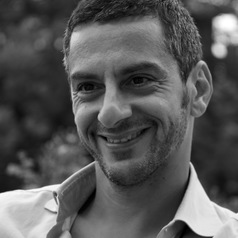“He died like a dog”, said President Donald Trump on October 27, 2019, at the press conference where he announced that US Special Forces had killed Islamic State leader Abu Bakr al-Baghdadi.
These cruel words could have been uttered to the same gloating effect by early 1900s Ku Klux Klan leaders coming back after a night of lynching African-Americans in the Deep South. The next day at a political rally, Trump cinematically mimicked the sound of the guns used: “Boom, boom, boom! They were out there, perfect.” Without evidence, he claimed that the terrorist leader had been “whimpering and crying and screaming all the way”, thus glorifying an extra-judicial killing.
Two days later in France, in an umpteenth national drama over the hijab), the Senate was meeting to adopt a bill prohibiting mothers wearing the Islamic head scarf to take part in school trips.
In between these two events, a former candidate of the right-wing National Front party, inspired by a conspiracy theory, shot two people in front of a mosque in southwest France to “avenge” the fire at Notre Dame cathedral – one that has been determined to be accidental.
Two weeks earlier, in the Saxony region of Germany, a man had tried to set off explosives in a synagogue and opened fire on passers-by. The previous month, a wave of violence against African immigrants swept through South Africa resulting in the death of 12 people.
The same month, a Hispanic man in Milwaukee, Wisconsin had acid thrown on his face and told to “go back to [his] country”. And in Italy, Liliana Segre, an 89-year-old Holocaust survivor, was provided with police protection as a result of threats she received following her call for parliament to set up a committee to combat racism.
While all these events could be examined in isolation, what if the current racisms were somehow connected?
Survivor and senator Liliana Segre speaks about the Holocaust.
Racism and the nation
Racism is a phenomenon that, in its various manifestations, travelled beyond national frontiers with colonial conquests long before the birth of the nation-state. Racial hierarchies have always been co-substantial to imperial domination. These hierarchies are not an exclusive Western phenomenon.
Yet over the past 200 years, race became an element defining the nation. Racism was used in the imperial metropolis to justify the mission to civilise, and also useful in small, non-colonial nation-states. There, it was a handy marker of distinction differentiating the Swiss from the Austrian or the Swede from the Dane.
What was and still is global is the idea that races exist and that racists believe their own to be superior to others. If the international system and its community had truly moved beyond nation-states and sovereignty, racists would need to reinvent themselves and their objective enemies Still, an evolving global dimension of 21st-century racism is already discernible.
The timeless nature of racism
Book-ended by the September 11, 2001, terrorist attacks and the 2016 US presidential election, with the Mediterranean migrant crisis of 2014 in between, the global resurgence in racism and discrimination has accelerated. The contemporary projection of discrimination is merely replaying familiar dynamics of dehumanisation, dispossession, denial and demonisation that have long existed across the world and among societies.
Similarly, many of the current episodes of racism – in their expression, analysis or representation – establish an overt link with earlier forms. In many places, the perception is that racism is a passé issue. Would that it were so. The United States have not been able to solve their racial question, nor has France resolved its colonial legacy, and the murmur of antisemitism in Europe has continued since World War II – to name but three examples.
Trumpian racism
Amidst these diffusions, latter-day Trumpian racism is emerging today with three cementing characteristics:
-
An internationalised form of expression whereby racists echo each other’s views and action in global unison.
-
A deepened normalisation of the practice with societies seemingly less and less troubled by the issue and its rationalisation.
-
A weaponisation of discrimination whereby ideas, discourse, behaviour, laws and institutions come to be aligned against others.
In and of themselves none of these dimensions is novel. Rather, it is their combination, expansion and loosened expression which are enabling the current rebooting of racism in a more insidious form than the earlier in-your-face colonial, segregation or Apartheid configurations.
Within nations, racism continues to be reenacted within specific scapegoating narratives. The Black, the Brown, the Yellow, the Muslim, the Jew, the Latino, the migrant, the foreigner are the mono-causal reason why things are “not good” and how xenophobia can be invited in.
A global normalisation
Racists now observe each other, reach out to each other and at times try to build alliances such as the recent “boot camp” organised by Steve Bannon in an Italian monastery (which eventually evicted him). In this real and virtual territory, various racisms previously otherwise disconnected now find common ground. In Brazil, Israel, and the Philippines, individuals and governments fuel their discourses and actions and magnify the global broadcast of their causes.
Whereas the current racisms reinforce each other in this fashion, constituencies opposed to racism are still equally anchored in national contexts but they do not find an equivalent transnational strength. International organisations seem particularly ill-equipped to react to the deepening international racist drift.
While racists around the world find ways to fuel the fires of hatred, those who stand against racism keep fighting against it using ineffective weapons. This is so because the approach is bureaucratic and declamatory, and leadership and substance are missing.
Weaponisation of racism
A further phenomenon characterising the revived racism is its weaponisation. Presidents, prime ministers, political-party leaders, elected officials, intellectuals and media personalities increasingly use openly racist language in a casual, nonchalant way, as Donald Trump has consistently done.
As the dynamic takes hold, the notion of whiteness has also been weaponised. Over the past years, individuals have been calling the police agencies in the United States to complain against others engaging in innocuous activities, instrumentalising authorities. In many of these cases, the officials reacted by de facto taking the side of the (White) people calling them. Officers have overwhelmingly approached the cases as if the “reported” (Black or Brown) individuals were suspicious, instead of holding the “denouncers” responsible for abusive use of the 911 emergency number.
This Kafkaesque phenomenon – the epitome of the routinised and martialised racism today – is striking, as the nature of these calls has expanded to include the most mundane activities. The process is insidious: that officers can claim to be merely responding to a citizen’s call betrays the problematic nature of a system protecting individuals’ racist whims while violating the rights of their victims.
“Racial profiling in the United States” (ACLU).
Totemic terrorism
It is in such a context where the global invocation of the term terrorism and the internationalised normalised stigmatisation of Muslims can allow for modern-day genocide and large-scale repression in Myanmar and China with minimal engagement on the part of the international community, including Muslim states such as Saudi Arabia.
In these cases, and in Kashmir, the post-9/11 hostility toward Islam has been instrumentalised by authoritarian regimes to repress their own populations
Another example of this travelling racism is the post-Apartheid anti-African xenophobia in South Africa. As Achille Mbembe remarks, referencing Frantz Fanon, South African forms of black nationalism are morphing into virulent forms of black-on-black racism. An ethno-racial project, this new form has forged two enemies for itself, one it fears and envies (whiteness or white monopoly capital) and another it loathes and despises (black people from elsewhere).
Here it is not merely the rhythms of discrimination – spelling flare-ups of cycles of neo-Nazism and neo-fascism – that matter here but how familiar motifs are acquiring new-found resonance.
In their ground-breaking 1971 conversation, “A Rap on Race”, the novelist James Baldwin and the anthropologist Margaret Mead captured the at-once raw and urgent, elusive and slow, intimate and public nature of racism. As Baldwin remarks at the start of the discussion:
“It is as though some great, great, great wound is in the whole body, and no one dares to operate: to close it, to examine it, to stitch it.”
Close to half a century later, the operating has not taken place and the wound is still there – for all to see now.



 Britain has almost 1 million young people not in work or education – here’s what evidence shows can change that
Britain has almost 1 million young people not in work or education – here’s what evidence shows can change that  Canada’s local food system faces major roadblocks without urgent policy changes
Canada’s local food system faces major roadblocks without urgent policy changes  The Beauty Beneath the Expressway: A Journey from Self to Service
The Beauty Beneath the Expressway: A Journey from Self to Service  Glastonbury is as popular than ever, but complaints about the lineup reveal its generational challenge
Glastonbury is as popular than ever, but complaints about the lineup reveal its generational challenge  Office design isn’t keeping up with post-COVID work styles - here’s what workers really want
Office design isn’t keeping up with post-COVID work styles - here’s what workers really want  Can your cat recognise you by scent? New study shows it’s likely
Can your cat recognise you by scent? New study shows it’s likely  Columbia Student Mahmoud Khalil Fights Arrest as Deportation Case Moves to New Jersey
Columbia Student Mahmoud Khalil Fights Arrest as Deportation Case Moves to New Jersey  Parents abused by their children often suffer in silence – specialist therapy is helping them find a voice
Parents abused by their children often suffer in silence – specialist therapy is helping them find a voice  Asian Fund Managers Turn More Optimistic on Growth but Curb Equity Return Expectations: BofA Survey
Asian Fund Managers Turn More Optimistic on Growth but Curb Equity Return Expectations: BofA Survey 

































